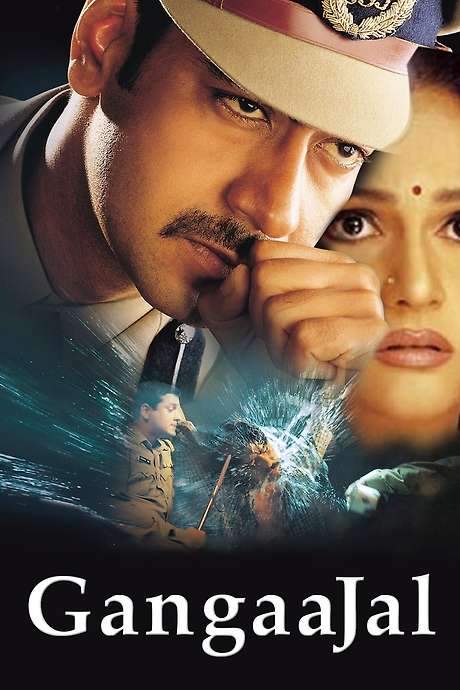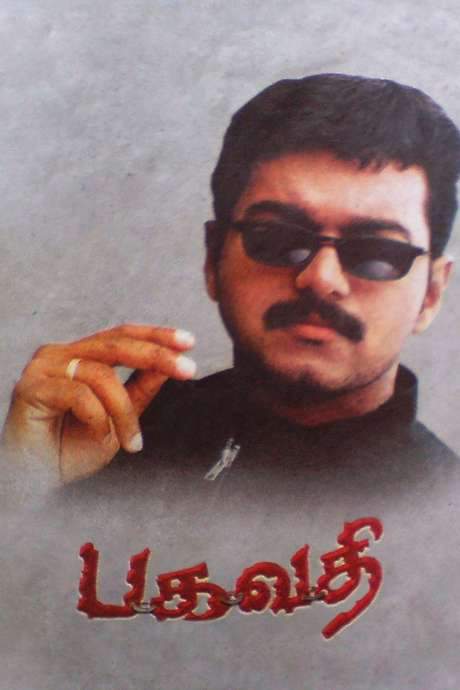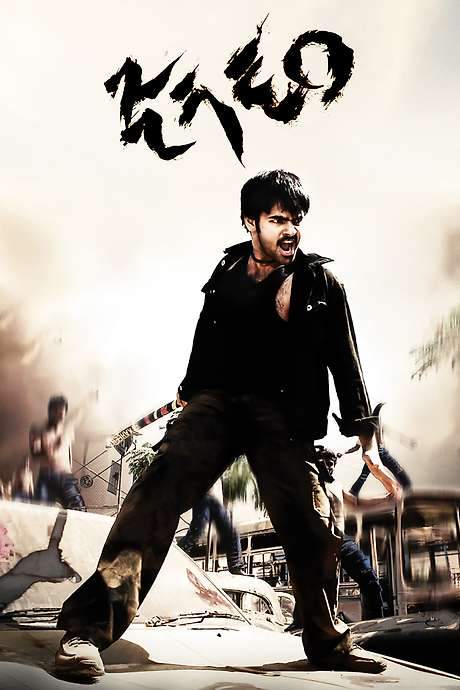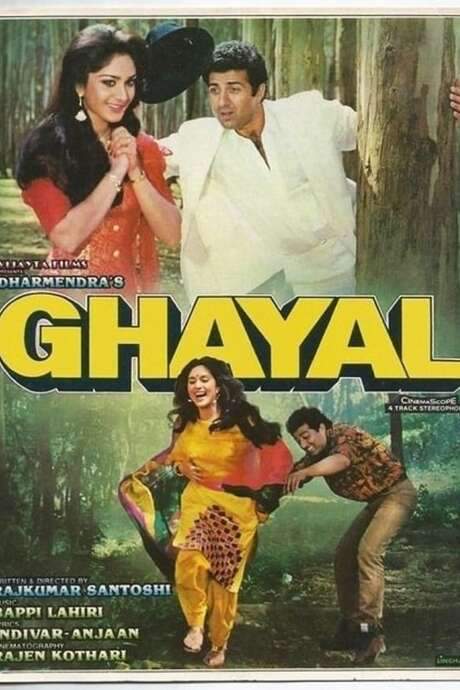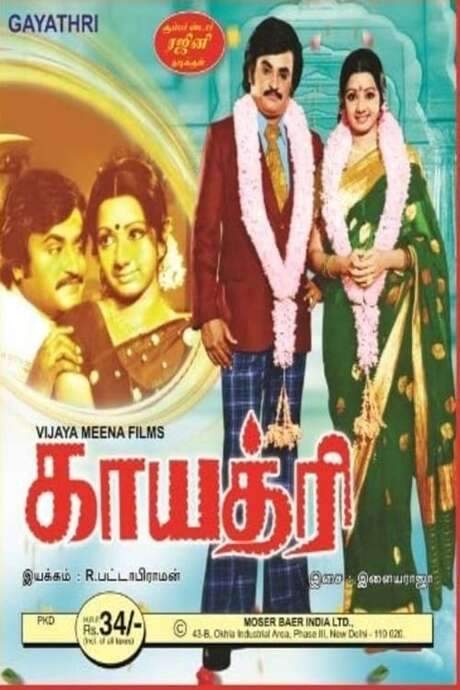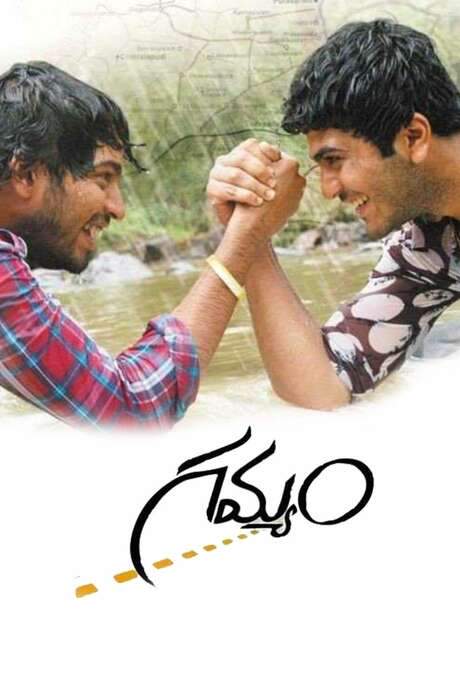
Gaayam
Year: 1993
Runtime: 136 mins
Language: Telugu
Director: Ram Gopal Varma
Durga intends to marry Anitha and settle down, but his brother Mohanakrishna is killed by a rival gang supported by local MLA Gurunarayana. To avenge him, Durga enters the criminal world and becomes a powerful gangster. Anitha disapproves, leaves him to marry a police officer, and they intersect again when that officer is posted where Durga rules.
Warning: spoilers below!
Haven’t seen Gaayam yet? This summary contains major spoilers. Bookmark the page, watch the movie, and come back for the full breakdown. If you're ready, scroll on and relive the story!
Gaayam (1993) – Full Plot Summary & Ending Explained
Read the complete plot breakdown of Gaayam (1993), including all key story events, major twists, and the ending explained in detail. Discover what really happened—and what it all means.
Durga, a notorious crime lord who operates where the law falters, steps into the role of a vigilante for the vulnerable. When a victim comes forward about men who molested his daughter, Durga moves quickly to intervene, delivering a harsh lesson to the culprits. A new police officer, Bharadwaj, arrives on the scene and arrests the criminals, clearing them in minutes. Amid the turmoil, Durga spots his old flame, Anitha, stirring memories of a college romance. Anitha, a journalism student with a strong sense of justice, had always believed in exposing corruption and abuse, and her path soon collides with Durga’s world in two very different ways.
During their college days, [Anitha] and Durga were inseparable—he was the brother of the hot-headed outlaw Mohana Krishna, and she dreamed of using the truth to reshape society. Anitha agreed to marry him only if he would vow not to follow in his brother’s criminal footsteps, a pledge Durga gave with a stubborn sincerity. This fragile promise sets the tone for a complicated relationship where love and principle pull in opposite directions as the city sways between law and crime.
The city’s power structure is sharpened by a ruthless political rival: Gurunarayana, a corrupt corporator who uses his influence to manipulate elections and public order. When he murders Mohana Krishna for political gain, Durga erupts in fury, dismantling the attackers and seizing control of the streets and the city’s power dynamics. However, the criminal mastermind Gurunarayana has more tricks up his sleeve, and he ensures that the formidable underworld figure Sarkar can maneuver from prison, returning to complicate Durga’s ascent. Anitha’s stance against Durga’s ruthless tactics grows stronger as she watches the violence spread, and she slowly breaks away from the ties that once bound her to the vigilante.
Meanwhile, Anitha remains committed to truth-telling, fighting to reveal injustices, irregularities, and evils that plague society. She also maintains a tense relationship with the city’s power players, while her connection to the law—the courage she shows in reporting—keeps her in the crosshairs of those who want to control the narrative. The arc widens as Durga’s cousin, Chitra, stands by him, lending him a personal circle of loyalty even as the political machine tightens its grip. The film tracks how Durga’s desire to protect the downtrodden collides with Gurunarayana’s calculated moves, and how Anitha’s insistence on transparency challenges them both.
As the power struggle intensifies, the authorities decide to leverage Durga’s formidable influence to quell riots and restore order on the political stage. Gurunarayana hatches a plan to destabilize the government through large-scale religious provocations, spurring violence that could topple the administration. Bharadwaj, on the front lines of law enforcement, confronts Gurunarayana’s henchmen, and a tense confrontation with the politician himself leaves lasting scars. Anitha, faithfully pursuing the truth, compiles evidence and interviews that threaten to expose the looming conspiracy, but her editor’s refusals and the political pressure complicate her mission. In a pivotal moment, she reveals her past relationship with Durga to Bharadwaj, testing loyalties on all sides.
The narrative builds toward a dramatic confrontation as Gurunarayana plots a dramatic self-staged bombing to win public sympathy during Ganesh Nimarjan. The police, aware of the danger, release Durga to help prevent the catastrophe. In the run-up to the event, Durga and Bharadwaj coordinate to manage the crowd and thwart the plan from inside a secluded setting for Sarkar’s scheme. The countdown reaches its peak as Sarkar reaches Gurunarayana’s residence in a bid to orchestrate the attack, only to find the forces of justice closing in. A fierce struggle unfolds, and Gurunarayana’s attempt to manipulate the scene backfires as the bomb is defused or obviated, preserving lives and exposing the plot. In the aftermath, Sarkar is killed, Gurunarayana is left severely injured, and the authorities move to sentence him for his crimes.
In the closing acts, truth and duty triumph over coercion as the city begins to heal from the chaos. Durga and the police’s coordinated effort restores a semblance of order, and Gurunarayana’s schemes crumble under the weight of evidence and accountability. Anitha, recognizing the limits of power without conscience, expresses gratitude to Durga for the forces he has rallied—and for the lessons learned about the path he chooses. The film ends on a note of cautious hope, with Durga contemplating a new direction for his life, acknowledging that the fight for justice requires more than fearlessness and strength; it demands responsibility, restraint, and a willingness to change.
-
Key characters and their arcs are woven through a political thriller that blends vigilante justice with journalistic integrity, personal loyalties, and the ever-present tension between reform and retribution.
-
The film juxtaposes the raw edges of crime with the moral clarity of a reporter who seeks to reveal the truth, even when it upends personal relationships and challenges the status quo.
-
Throughout, the city serves as a character in its own right, its fortunes rising and falling with the balance of power, public sentiment, and the relentless pursuit of accountability.
Last Updated: October 09, 2025 at 09:22
Unlock the Full Story of Gaayam
Don't stop at just watching — explore Gaayam in full detail. From the complete plot summary and scene-by-scene timeline to character breakdowns, thematic analysis, and a deep dive into the ending — every page helps you truly understand what Gaayam is all about. Plus, discover what's next after the movie.
Gaayam Timeline
Track the full timeline of Gaayam with every major event arranged chronologically. Perfect for decoding non-linear storytelling, flashbacks, or parallel narratives with a clear scene-by-scene breakdown.

Similar Movies to Gaayam
Discover movies like Gaayam that share similar genres, themes, and storytelling elements. Whether you’re drawn to the atmosphere, character arcs, or plot structure, these curated recommendations will help you explore more films you’ll love.
Explore More About Movie Gaayam
Gaayam (1993) Scene-by-Scene Movie Timeline
Gaayam (1993) Movie Characters, Themes & Settings
Gaayam (1993) Spoiler-Free Summary & Key Flow
Movies Like Gaayam – Similar Titles You’ll Enjoy
Jaya Janaki Nayaka (2017) Movie Recap & Themes
Ayogya (2019) Spoiler-Packed Plot Recap
Ganagandharvan (2019) Full Movie Breakdown
Gangaajal (2003) Plot Summary & Ending Explained
Bagavathi (2002) Spoiler-Packed Plot Recap
Jagadam (2007) Ending Explained & Film Insights
Desamuduru (2007) Plot Summary & Ending Explained
Ghayal (1990) Spoiler-Packed Plot Recap
Dhanam (1991) Movie Recap & Themes
Gangaa Jamunaa Saraswathi (1988) Plot Summary & Ending Explained
Dacait (1987) Spoiler-Packed Plot Recap
Mangalyam (2022) Movie Recap & Themes
Gaalipata (2008) Story Summary & Characters
Gaayathri (1977) Film Overview & Timeline
Gamyam (2008) Film Overview & Timeline






